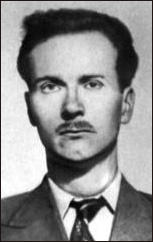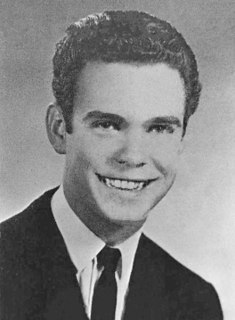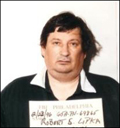Related Research Articles
The Venona project was a United States counterintelligence program initiated during World War II by the United States Army's Signal Intelligence Service, which ran from February 1, 1943, until October 1, 1980. It was intended to decrypt messages transmitted by the intelligence agencies of the Soviet Union. Initiated when the Soviet Union was an ally of the US, the program continued during the Cold War, when it was considered an enemy.

Aldrich Hazen "Rick" Ames is a former Central Intelligence Agency (CIA) officer turned KGB double agent, who was convicted of espionage in 1994. He is serving a life sentence, without the possibility of parole, in the Federal Correctional Institution in Terre Haute, Indiana, United States. Ames was formerly a 31-year CIA counterintelligence officer who committed espionage against the U.S. by spying for the Soviet Union and Russia. At the time of his arrest, Ames had compromised more highly classified CIA assets than any other officer in history until Robert Hanssen's arrest seven years later in 2001.

The Cambridge Spy Ring was a ring of spies in the United Kingdom that passed information to the Soviet Union during World War II and was active from the 1930s until at least into the early 1950s. None of the known members was ever prosecuted for spying. The number and membership of the ring emerged slowly, from the 1950s onwards. The general public first became aware of the conspiracy after the sudden flight of Donald Maclean and Guy Burgess to the Soviet Union in 1951. Suspicion immediately fell on Harold "Kim" Philby, who eventually fled the country in 1963. Following Philby's flight, British intelligence obtained confessions from Anthony Blunt and then John Cairncross, who have come to be seen as the last two of a group of five. Their involvement was kept secret for many years: until 1979 for Blunt, and 1990 for Cairncross. The moniker Cambridge Four evolved to become the Cambridge Five after Cairncross was added.

John Cairncross was a British civil servant who became an intelligence officer and spy during the Second World War. As a Soviet double agent, he passed to the Soviet Union the raw Tunny decryptions that influenced the Battle of Kursk. He was alleged to be the fifth member of the Cambridge Five. He was also notable as a translator, literary scholar and writer of non-fiction.

Oleg Antonovich Gordievsky, CMG is a former colonel of the KGB who became KGB resident-designate (rezident) and bureau chief in London, and was a double agent, providing information to the British Secret Intelligence Service (MI6) from 1974 to 1985. After being recalled to Moscow under suspicion, he was exfiltrated from the Soviet Union in July 1985 under a plan code-named Operation Pimlico. The Soviet Union subsequently sentenced him to death in absentia.

The Foreign Intelligence Service of the Russian Federation or SVR RF is Russia's external intelligence agency, focusing mainly on civilian affairs. The SVR RF succeeded the First Chief Directorate (PGU) of the KGB in December 1991. The SVR has its headquarters in the Yasenevo District of Moscow.

The Petrov Affair was a Cold War spy incident in Australia, concerning the defection of Vladimir Petrov, a KGB officer, from the Soviet embassy in Canberra in 1954. The defection led to a Royal Commission and the resulting controversy contributed to the Australian Labor Party split of 1955.

Oleg Vladimirovich Penkovsky, codenamed HERO, was a Soviet military intelligence (GRU) colonel during the late 1950s and early 1960s. Penkovsky informed the United States and the United Kingdom about Soviet military secrets, most importantly, the appearance and footprint of Soviet intermediate-range ballistic missile (IRBM) installations and the weakness of the Soviet intercontinental ballistic missile (ICBM) program. This information was decisive in allowing the US to recognize that the Soviets were placing IRBMs in Cuba before most of the missiles were operational. It also gave US President John F. Kennedy, during the Cuban Missile Crisis that followed, valuable information about Soviet weakness that allowed him to face down Soviet leader Nikita Khrushchev and resolve the crisis without a nuclear war.
Oleg Danilovich Kalugin is a former KGB general. He was during a time head of KGB political operations in the United States and later a critic of the agency. After being convicted of spying for the West in absentia during a trial in Moscow, he remained in the US and was sworn in as a citizen on 4 August 2003.
Sir Roger Henry Hollis was a British journalist and intelligence officer who served with MI5 from 1938 to 1965. He was Director General of MI5 from 1956 to 1965.
As early as the 1920s, the Soviet Union, through its GRU, OGPU, NKVD, and KGB intelligence agencies, used Russian and foreign-born nationals, as well as Communists of American origin to perform espionage activities in the United States, forming various spy rings. Particularly during the 1940s, some of these espionage networks had contact with various U.S. government agencies. These Soviet espionage networks illegally transmitted confidential information to Moscow, such as information on the development of the atomic bomb. Soviet spies also participated in propaganda and disinformation operations, known as active measures, and attempted to sabotage diplomatic relationships between the U.S. and its allies.
Able Archer 83 was the annual NATO Able Archer exercise conducted in November 1983. The purpose for the command post exercise, like previous years, was to simulate a period of conflict escalation, culminating in the US military attaining a simulated DEFCON 1 coordinated nuclear attack. The five-day exercise, which involved NATO commands throughout Western Europe, was coordinated from the Supreme Headquarters Allied Powers Europe (SHAPE) headquarters in Casteau, Belgium.

Melita Stedman Norwood was a British civil servant, Communist Party of Great Britain member and KGB spy.
Michael John Bettaney, also known as Michael Malkin, was a British intelligence officer who worked in the counter-espionage branch of the Security Service often known as MI5. He was convicted at the Old Bailey in 1984 of offences under section 1 of the Official Secrets Act 1911 after passing sensitive documents to the Soviet Embassy in London and attempting to act as an agent-in-place for the Soviet Union.
Adolf Georgievich Tolkachev was a Soviet electronics engineer who provided key documents to the United States Central Intelligence Agency (CIA) between 1979 and 1985. Working at the Soviet radar design bureau Phazotron as one of the chief designers, Tolkachev gave the CIA complete detailed information about such projects as the R-23, R-24, R-33, R-27, and R-60, S-300 missile systems; fighter-interceptor aircraft radars used on the MiG-29, MiG-31, and Su-27; and other avionics. He was executed as a spy in 1986.

Christopher Maurice Andrew, is an Emeritus Professor of Modern and Contemporary History at the University of Cambridge with an interest in international relations and in particular the history of intelligence services.

Clyde Lee Conrad was a U.S. Army non-commissioned officer who, from 1974 until his arrest on August 23, 1988, sold top secret classified information to the People's Republic of Hungary, including top secret NATO war plans. He was convicted of espionage and high treason in a German court in 1990, and was sentenced to life imprisonment.
The "Mitrokhin Archive" is a collection of handwritten notes which were secretly made by the KGB archivist Vasili Mitrokhin during the thirty years in which he served as a KGB archivist in the foreign intelligence service and the First Chief Directorate. When he defected to the United Kingdom in 1992, he brought the archive with him, in six full trunks. His defection was not officially announced until 1999.
John Alexander Symonds is an English former Metropolitan Police officer and KGB agent.

Robert Stephen Lipka was a former army clerk at the National Security Agency (NSA) who, in 1997, pleaded guilty to conspiracy to commit espionage and was sentenced to 18 years in prison. He was arrested more than 30 years after his betrayal, as there is no statute of limitations for espionage.
References
- 1 2 3 4 West, Nigel (2 September 2009). The A to Z of British Intelligence. London: Scarecrow Press. ISBN 978-0810868656 . Retrieved 11 February 2015.
- 1 2 Andrew, Christopher (3 November 2009). Defend the Realm: The Authorized History of MI5. London: Knopf. p. 586. ISBN 978-0307263636 . Retrieved 11 February 2015.
- 1 2 3 4 5 6 7 8 9 Andrew, Christopher (5 September 1999). The Sword and the Shield: The Mitrokhin Archive and the Secret History of the KGB. London: Basic Books. ISBN 978-0465003129 . Retrieved 10 February 2015.
- ↑ "Remembering Rediffusion Limited; Group Employees". March 2015. Retrieved 3 March 2015.
- ↑ Primakov, Yevgeny (11 October 2004). Russian Crossroads: Toward the New Millennium. New Haven, Connecticut: Yale University Press. p. 91. ISBN 978-0300097924 . Retrieved 3 March 2015.
But perhaps the biggest traitor was Colonel Viktor Oshchenko ... Those three also belonged to the Scientific and Technical Intelligence Service.
- ↑ Conett, David; Cusick, James (19 November 1993). "KGB defection that spelt end for undercover agent" . The Independent . London. Archived from the original on 14 May 2022. Retrieved 10 February 2015.
- ↑ Janice Castro, "The Espionage Goes on", Time , 31 August 1992
- ↑ "В Великобритании осужден российский шпион; Инженер Смит занимался промышленным шпионажем (In Britain, Russian spy convicted; Engineer Smith engaged in industrial espionage)". Kommersant (in Russian). Moscow. 20 November 1993. Retrieved 30 March 2015.
- ↑ West, Nigel (26 January 2007). Historical Dictionary of Cold War Counterintelligence. London: Scarecrow Press. p. 314. ISBN 978-0810857704 . Retrieved 12 February 2015.
- ↑ Security Commission report Cm 2930, report by the UK's Security Commission following an investigation of the case
- ↑ Bandpass Filter Assembly component, Andrew Mackinlay MP asks in the House of Commons for clarification on the document alleged to be linked to the ALARM missile project. 10 January 2006 Hansard : Column 501W